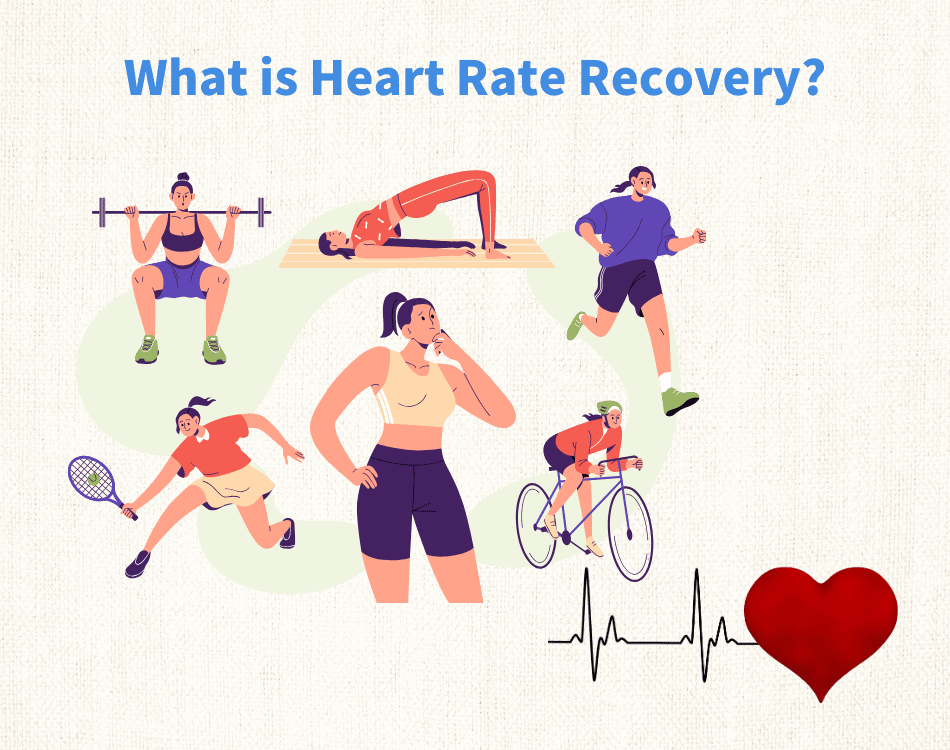Unlock the Secrets of Your Heart: Discover the Truth Behind Ideal Cardio Recovery!
Cardio recovery is a critical component of any fitness regimen, yet it's often overlooked by many individuals striving to improve their performance and overall well-being. At its core, cardio recovery refers to the body's ability to return to its resting state after physical exertion. Understanding your cardio recovery number not only provides insights into your fitness level but also helps in crafting a more effective workout strategy. This article aims to uncover what constitutes a good cardio recovery number and why it plays a vital role in your health and performance. By exploring this concept, you can take actionable steps to enhance your fitness journey and optimize your recovery process.

Understanding Cardio Recovery
Cardio recovery is the period during which your heart rate decreases back to its baseline after you've engaged in cardiovascular exercise. This recovery phase is essential because it indicates how efficiently your body can return to a state of rest and readiness for the next workout. During intense exercise, your heart works hard to pump oxygen-rich blood to your muscles, and after you stop, your heart rate gradually slows down. Monitoring this recovery is crucial as it reflects your cardiovascular fitness level and overall health. A faster recovery indicates a stronger heart and a more efficient circulatory system, while a slower recovery can signal potential issues, including overtraining or inadequate fitness levels. Personal experiences from friends who track their recovery rates often reveal how small changes in their training routines led to significant improvements in their recovery times, allowing them to push harder in future workouts.
What is a Good Cardio Recovery Number?
A good cardio recovery number typically refers to how quickly your heart rate returns to its resting state after exercise. Generally, a recovery heart rate of 12 to 20 beats per minute (bpm) within the first minute after stopping exercise is considered a healthy benchmark for most individuals. However, this can vary based on several factors, including your age, fitness level, and the intensity of the exercise performed. For instance, younger individuals or seasoned athletes may experience quicker recovery rates. In contrast, those new to fitness or older adults might find their recovery numbers slightly less favorable. My friend, who has been running marathons for years, shared that he aims for a recovery rate of 18 bpm or higher within the first minute after his long runs, emphasizing how this number has become a crucial part of his post-run routine. Understanding your individual recovery number can help you tailor your training program, ensuring you're pushing your limits safely and effectively.
How to Measure Cardio Recovery
Measuring cardio recovery can be achieved through various methods, with heart rate monitoring being the most common. You can use devices like heart rate monitors or smartwatches to track your heart rate immediately after exercise and during the recovery period. To effectively measure your recovery, note your heart rate at the end of your workout and then again after one minute of rest. The difference between these two numbers will give you your recovery rate. Additionally, perceived exertion scales can also be a useful tool; simply rate how you feel on a scale of 1 to 10 after your workout and again after one minute of resting. Keeping a log of these measurements over time will provide valuable insights into your progress and help identify patterns. For instance, I started tracking my recovery rates after each workout, which revealed that my cardio recovery improved significantly after I incorporated more rest days into my routine, allowing my body time to recuperate.
The Importance of Cardio Recovery
Good cardio recovery numbers are not just about numbers; they have profound implications for your overall health and fitness journey. Efficient recovery can lead to improved athletic performance, as your body becomes more adept at handling physical stress and quickly bouncing back. Moreover, proper recovery reduces the risk of injury, as it allows muscles and joints to repair effectively. On the contrary, poor recovery can result in fatigue, decreased motivation, and even burnout, making it crucial to prioritize your recovery strategy. Many of my friends who have experienced injuries often cite inadequate recovery as a contributing factor. They emphasize how embracing a more mindful approach to recovery has led to fewer injuries and greater enjoyment in their fitness pursuits. By focusing on your cardio recovery, you're investing in your long-term health, ensuring that you can maintain and enhance your fitness levels over time.
Optimizing Your Cardio Recovery for Better Health
In summary, understanding and monitoring your cardio recovery number is vital for anyone serious about fitness. A good recovery rate not only indicates a strong cardiovascular system but also plays a crucial role in enhancing overall health, performance, and injury prevention. As we discussed, various factors influence these numbers, and individuals should tailor their goals based on personal fitness levels. By implementing strategies to improve your recovery, you can take significant strides toward achieving your fitness aspirations. So, whether you're a seasoned athlete or just starting, make it a point to prioritize your cardio recovery; your heart will thank you.








